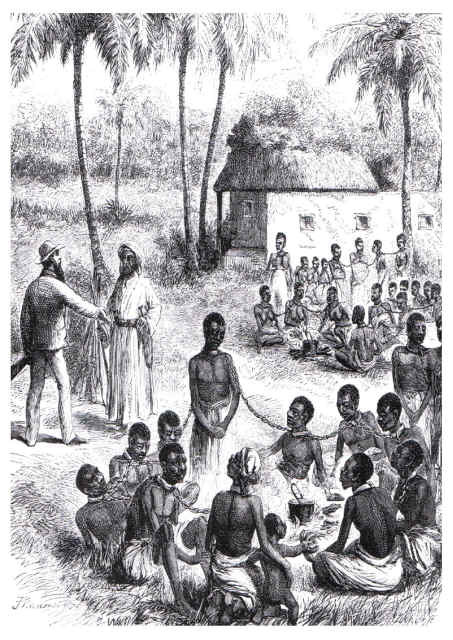
Who Gained the Most from the Slave Trade in Ghana?
The Asante Kingdom likely benefited the most materially from the transatlantic slave trade among all Ghanaian kingdoms:
Their empire expanded through warfare, leading to many captives.
They traded gold and slaves for firearms, which further enhanced their military power.
Their central location allowed them to dominate internal trade routes leading to the coast.
The Denkyira also profited heavily in the early phase (17th century), but their defeat by Asante in 1701 marked a shift in power.
The Fante Confederacy gained significantly as middlemen, especially via trade connections at Cape Coast and Elmina, but their lack of central organization limited long-term control.
Were Arabs Involved in Slave Raiding or Trading in Ghana?
✅ Yes, but mostly in Northern Ghana and across the Sahel.
The trans-Saharan slave trade long predated European contact, with Arab and Berber traders moving slaves northwards to North Africa, the Middle East, and the Islamic world.
In Northern Ghana, kingdoms like Mamprugu, Dagbon, and Gonja interacted with Muslim traders, some of whom were Tuareg, Hausa, or other Sahelian groups with ties to Arab trade networks.
Slave raiding occurred between African Muslim kingdoms and their neighbors, with captives sold northwards, sometimes across the Sahara.
However, Arabs were not present in large numbers within southern Ghana or on the coast. The European slave trade (Atlantic) became dominant in the south by the 17th–19th centuries.
How the Slave Trade Worked in Practice (In Ghana)
Wars and Raids: Kingdoms like Asante and Denkyira conducted wars or raids to acquire captives.
Captives Transported to the Coast: Via caravan routes through forest and savannah.
Sold to European Traders: At forts like Elmina, Cape Coast, Fort Amsterdam, Christiansborg (Osu), Anomabo, etc.
Exchanged for Goods: Firearms, alcohol, textiles, beads, and metals.
Shipped Across the Atlantic: To the Americas and Caribbean — part of the infamous Middle Passage.
Legacy and Historical Responsibility
While Europeans built the infrastructure of the Atlantic slave trade and profited massively from it through plantations and empire, some African kingdoms — including those in modern-day Ghana — were also complicit as suppliers and beneficiaries.
This complicity has been acknowledged in Ghanaian public discourse, and many traditional leaders, historians, and citizens are engaged in conversations about truth, reconciliation, and education regarding this painful past.
Some forts, such as Elmina Castle and Cape Coast Castle, now serve as UNESCO World Heritage Sites and places of remembrance.
Conclusion
The transatlantic slave trade was a global atrocity with deep local involvement. In Ghana, powerful kingdoms like the Asante and Denkyira enriched themselves by capturing and selling slaves, while others served as intermediaries or victims. The Arab (trans-Saharan) trade also played a major role in northern Ghana, especially among Muslim kingdoms.
Understanding this history requires honesty, nuance, and respect for the millions who suffered. But it also helps us better understand how power, wealth, and suffering were intertwined in both African and global history.